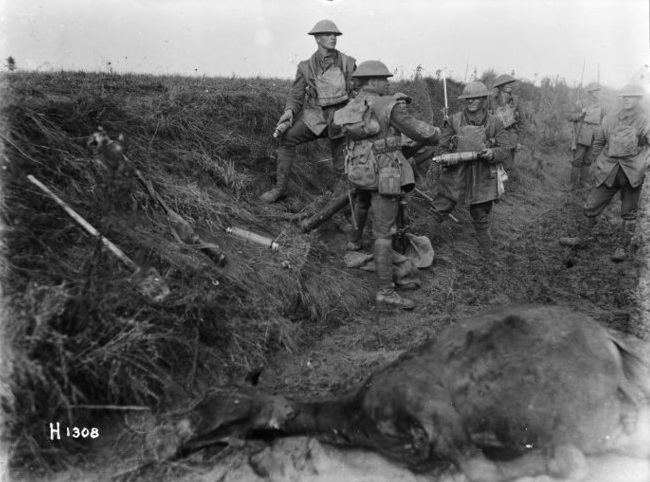Country New Zealand Size Four Battalions Motto(s) Soyes Ferme | Type Infantry Nickname(s) "The Dinks" | |
 | ||
Active 1 May 1915 – 4 February 1919 | ||
The New Zealand Rifle Brigade (Earl of Liverpool's Own), affectionately known as The Dinks, was formed on 1 May 1915 as the 3rd Brigade of the New Zealand Division, part of the New Zealand Expeditionary Force. During the First World War it fought in Egypt, against the Senussi, and then on the Western Front. It was disbanded on 4 February 1919.
Contents
History
When the first World War commenced New Zealand only had sufficient infantry battalions to form a single brigade and this was combined with an Australian brigade to form the New Zealand and Australian Division. New Zealand had also been recruiting reinforcements to fill the ranks of soldiers killed and wounded and after the defeat of the Ottoman Empire Suez Offensive with minimal losses, it became clear that additional units could be formed.
Formation
The decision was taken to use the three battalions of reinforcements in Egypt, with another inbound, to form the 2nd Infantry Brigade. The 5th Reinforcements were still in New Zealand and were nominated to form the nucleus of a new infantry unit that was initially designated as the Trentham Infantry Regiment, after the camp where it was formed. Consisting of two battalions and commanded by a British Army officer, Lieutenant Colonel Harry Fulton, it did not become the New Zealand Rifle Brigade until 1 Oct 1915 shortly after a 3rd and 4th Battalion had been added.
Egypt
Two battalions left Wellington on 8 October 1915 eventually arriving in Cairo on 14 November. They were then attached for duties with the Western Frontier Force, which had been raised to counter a Senussi invasion from Libya. The 1st Battalion fought two actions south-west of Matruh as part of a mixed force (including British, Australians, and Indians), one on Christmas Day, the other on 23 January 1916. Both were successful and broke the back of the invasion.
In mid-February the 1st Battalion rejoined the rest of the brigade at Moascar in the Suez Canal area. They were joined on 13 and 15 March 1916 by the third and fourth battalions. After a period of reorganisation the full brigade left Alexandria on 7 April for France.
France
After a period of training the brigade entered the line on 13 May east of Armentières. It participated in the vast majority of the battles of 1916, 1917 and 1918. Notable examples include:
Commanders
The end
The Brigade, as part of the New Zealand Division, formed part of the IInd Corps of the Second Army, Army of occupation in the Cologne bridgehead. The first elements of the Brigade were returned to New Zealand from 26 December 1918, with up to 1000 per week leaving. By the end of January 1919, the four battalions had been reduced to two with the final units being disbanded on 4 February 1919.
Mascot
The unit had a Harlequin Great Dane dog called Freda, as a mascot, which died in England in 1918. A marble memorial to the dog can be found on Cannock Chase in Staffordshire.
Model WW1 battlefield
In September 2013 it was reported that Staffordshire County Council would excavate the World War I model battlefield near Brocton, Staffordshire, which had been constructed by German Prisoners of War held in a camp on nearby Cannock Chase and guarded by soldiers of the New Zealand Rifle Brigade (Earl of Liverpool's Own). The model of the village and surrounding area of Messines in Belgium, which included replica trenches and dugouts, railway lines, roads, and accurate contours of the surrounding terrain, would be open to public view for a few weeks before being buried over again to ensure its preservation. The excavation has revealed amazing details of the 40 metre square battlefield which is said to be perfectly preserved. "Staffordshire County Council will be using laser-scanning technology to re-create the site as a 3D interactive model that can be explored online."
Battle honours
During its short existence the Brigade was awarded the following battle honours:
Individual medals
Two members of the Brigade won the Victoria Cross; LCpl Samuel Frickleton on 7 June 1917 and Sgt Harry Laurent on 12 September 1918. In addition, the following were awarded:
